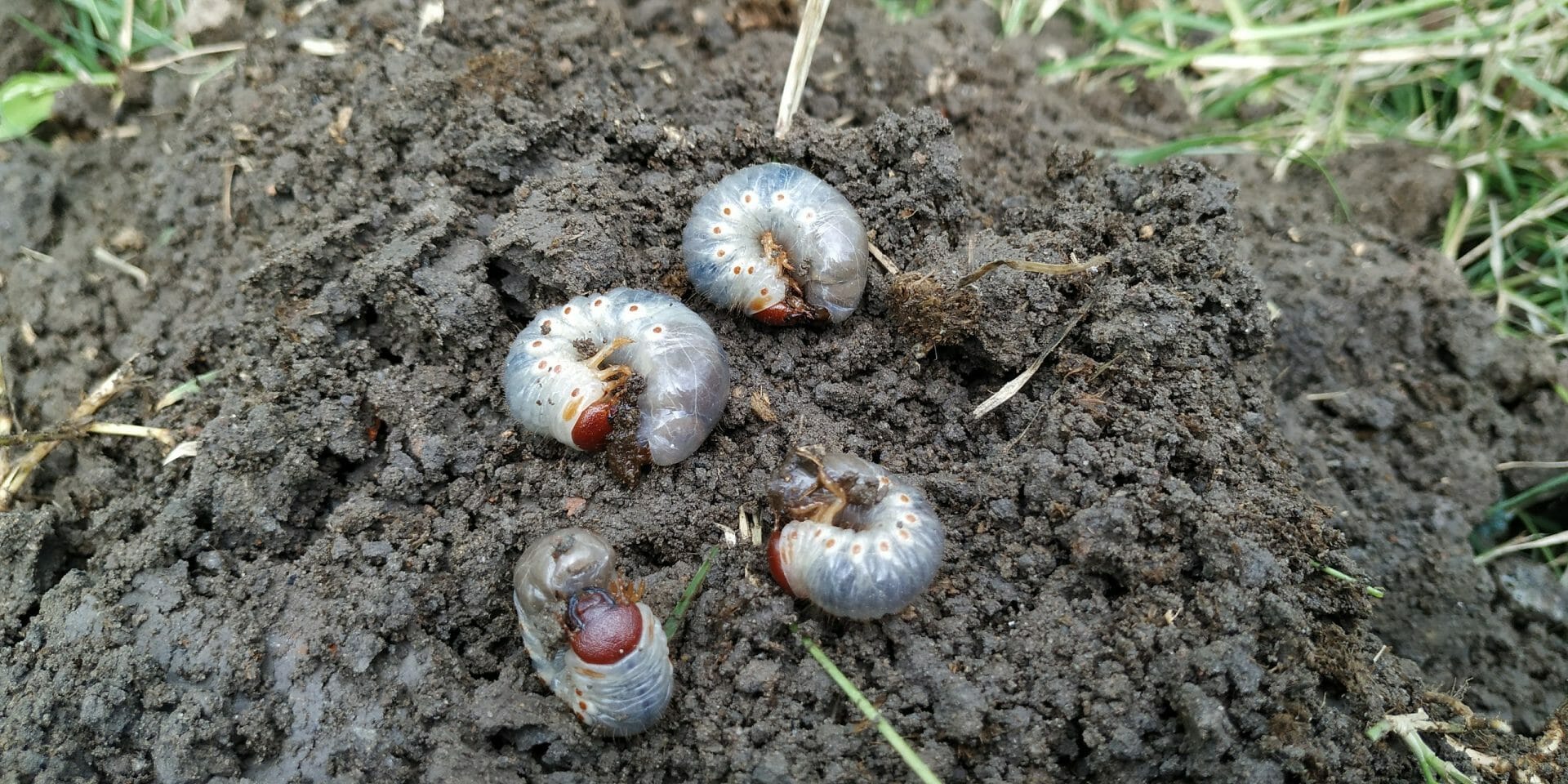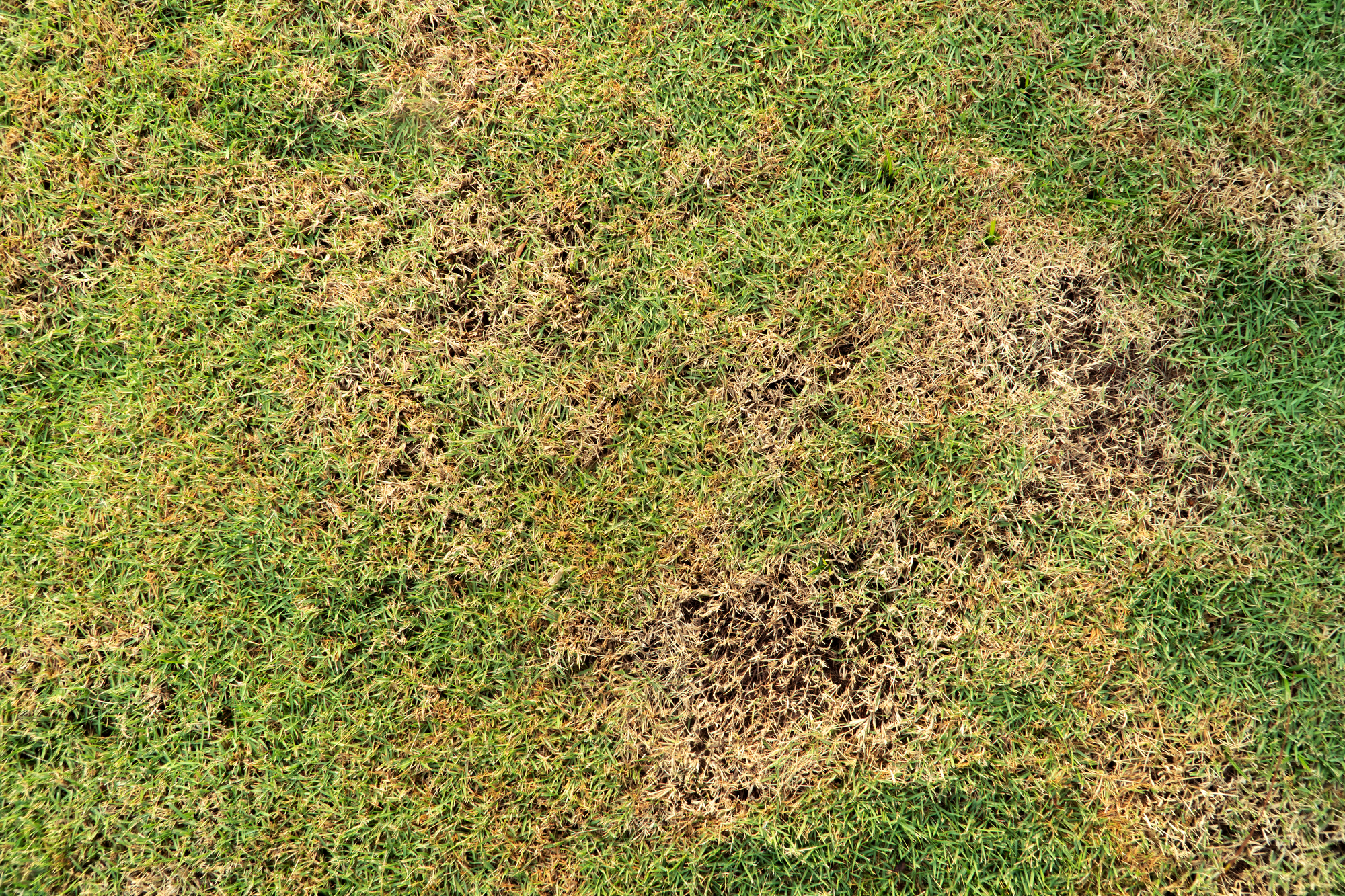
Grub Worms: A Hazard To A Healthy Lawn
Grub worms are the worst pests to have because they damage your turf by feeding on the roots, the foundation of your lawn that supplies the nutrients and water from the soil. In this blog, we will discuss everything you need to know about grub worms, and how you can keep them away from your beautiful lawn.

Grub Worm: The Specimen
Although the name may be misleading, grub worms are the larvae of various beetle varieties. These varieties include the Japanese Masked Chafer and June beetle. Their head is brown, while their body is cream. They have six legs and can be found anywhere from ¾ of an inch to 2 inches in length.
Behavioral Characteristics
The primary characteristic of grub worms is their propensity to feed on organic matter. These worms come to be after female beetles lay their eggs in late spring. Once these eggs hatch, the larvae begin feeding on the roots voraciously beneath the soil during the summer. Then, when temperatures drop they burrow deeper into the soil, coming back up to feed in the spring.
Symptoms of Infestation
One of the first signs of an infested lawn is turf discoloration. This occurs when larvae tunnel underneath your turf in search of organic matter. Additionally, the feeding on roots will create symptoms that can easily be mistaken for drought stress. Grub worms initially create irregular brown patches, an infestation can lead to a dull gray lawn if severe enough. When infestation is bad enough, you can even roll up the turf as if it were a loose carpet.
Prevention of Grub Worms
Preventative control methods come through altering soil biology by using organic fertilizers with beneficial bacteria and pathogens, and nematodes, and by encouraging bird activity by feeding. Nematodes are small roundworms that can be dropped into your soil and release grub-killing pathogens. Getting chickens along with and in combination with preventative insecticides will also help. You can also apply the dust form of milky spore disease onto your turf, that way grub worms will die as they feed. Additionally, the healthier your lawn is, the better it will defend itself from grub worms. A comprehensive lawn care program like ours at Higher Ground should do the trick.
Grub Worm Control Options
If you want to be sure that you have grub worms, you can dig up a 12” X 12” square and look under the turf. A good rule of thumb is that if you have more than 10 – 12 grubs per square foot then you have a problem that needs a solution. Soapy water can smother and suffocate the larvae for a more natural solution that isn’t too harmful but has to be timed just right when the larvae are smallest. If your infestation is severe, you will need professional pest control applications. Even if it is not particularly bad, we still recommend a preventative pesticide application. Consult the professionals at Higher Ground for curative and preventative control options.
Higher Ground Lawn Care and Lighting are ready to take your property to a higher level. Experience why your neighbors and businesses in University Park, TX & surrounding areas choose Higher Ground Lawn Care & Lighting to bring their property to the next level. Give us a call at (682) 206-3596 or check out our website today.
Ready to get started?


